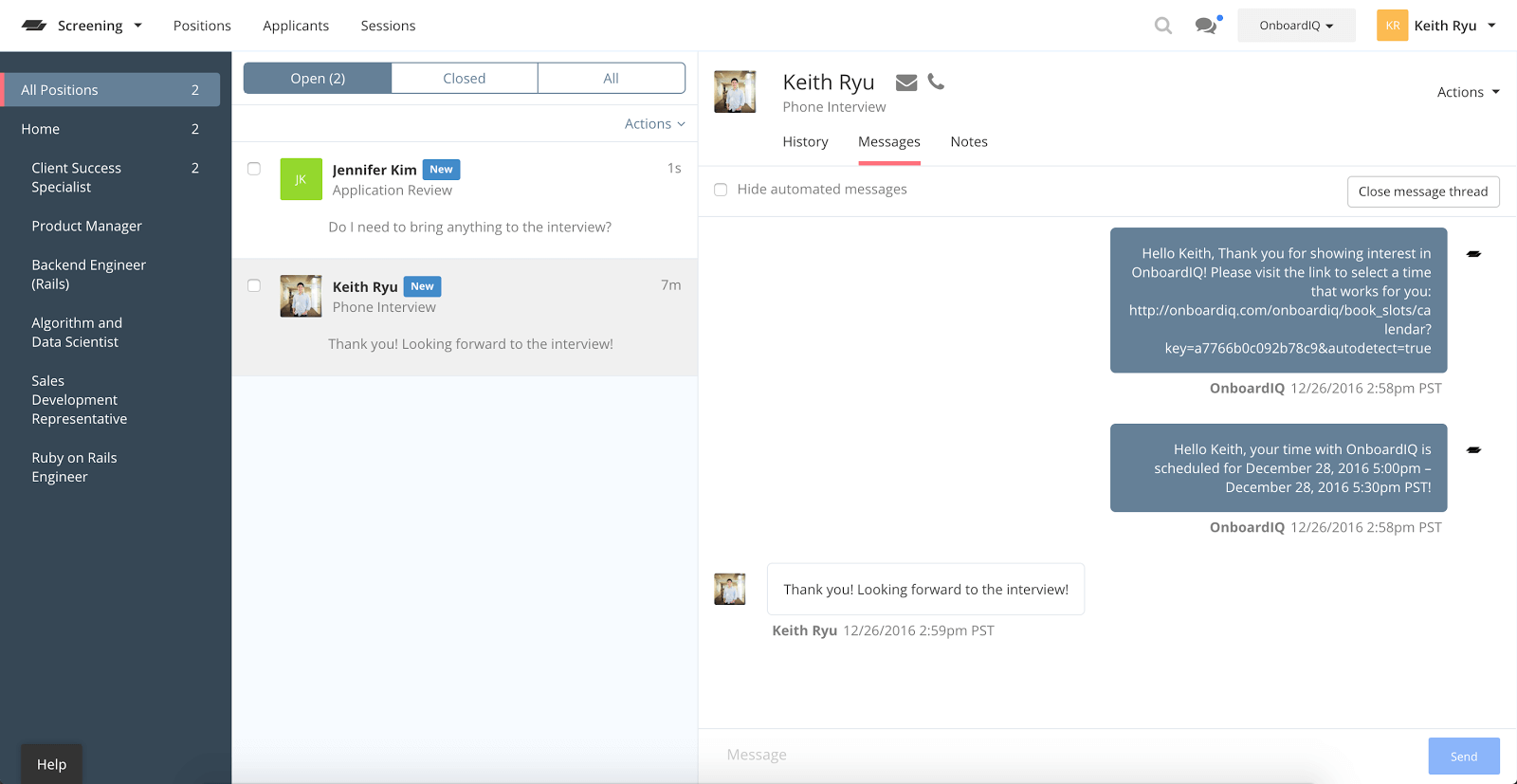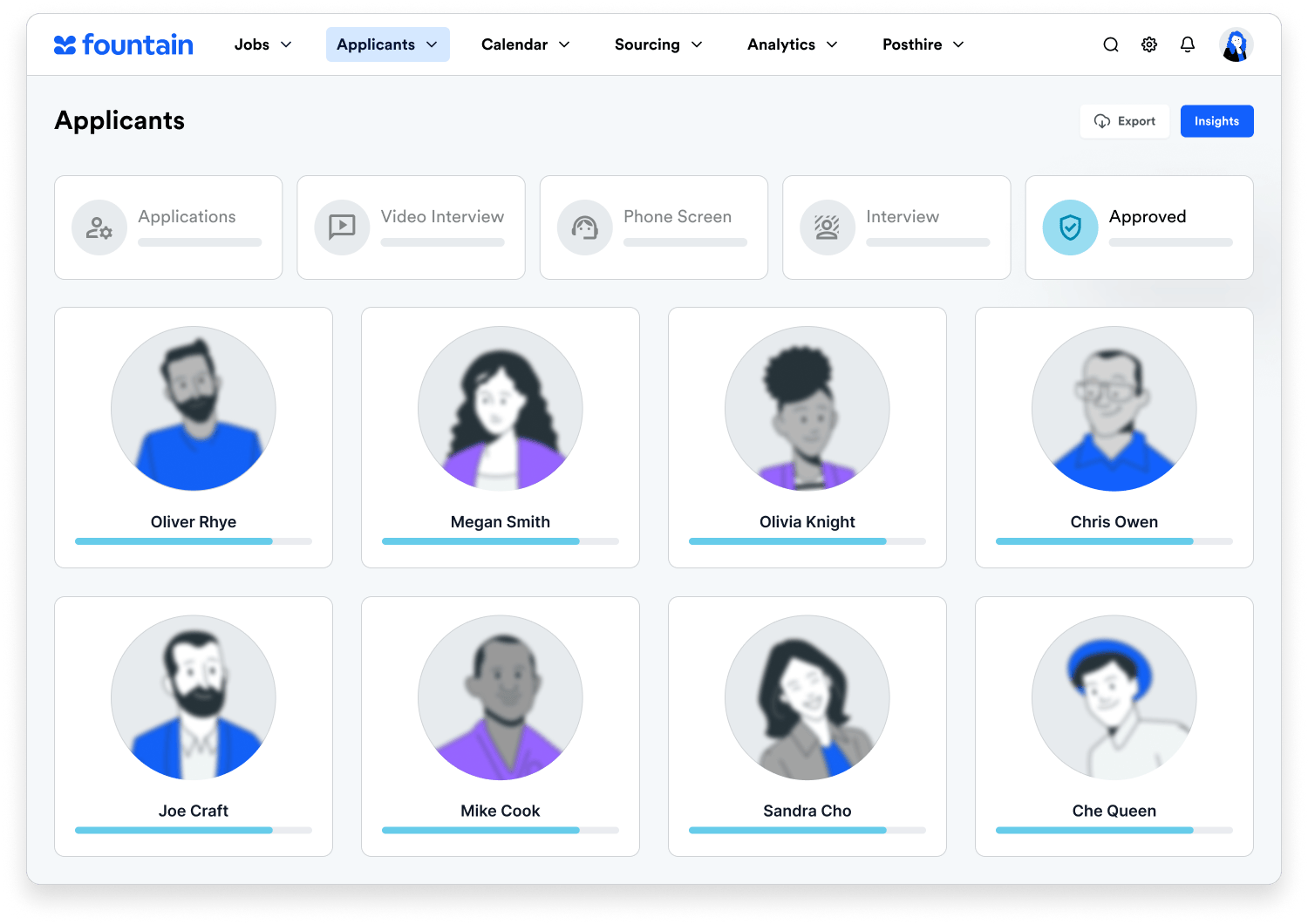Remember the good old days of hiring?
Maybe you were the owner of a chain of franchises, or maybe you were a recruiter in charge of maintaining a workforce with a lot of turnover. You might recall posting an ad in the Classifieds and awaiting the handful of job applicants who show up at your door.
Things are different today. It has never been tougher to make a good hire, and providing a great candidate experience in recruitment is essential.
Whether it’s the expensive job boards you have to post to or the new “on-demand” startups out of Silicon Valley against whom you have to compete for the same applicants, your company must rethink how it hires to stay competitive. This means you need to find ways to improve the candidate experience.
Challenge: How To Improve The Candidate Experience
One of the biggest challenges of modern-day workforce management is at the top of the funnel itself: the increasing costs of hiring quality employees, second only to finding ways to improve the candidate experience.
While the number of total job openings in the world has increased drastically since the days of the Classifieds, the number of total job applicants has not. Not only is it costly to find someone to apply for your job opening, with a single Craigslist ad costing up to $75 per post, but it’s also time consuming to set up, meaning your recruiting process must be streamlined and fast to be cost-effective.
Companies should spend just as much time improving hiring processes as they do on attracting more applicants.
Think about it — you could either:
1) Pay $500 to get 200 job applicants and convert 10% of those into 20 workers with an inefficient hiring process ($25/hire), or
2) Pay $100 to get 40 job applicants and convert 50% of those into 20 workers with a great hiring process ($5/hire).
That’s a significant difference, and the core solution is creating a great candidate experience to improve conversion.
At Fountain, we work with some of the smartest, fastest-growing companies in the world, and we’re always brainstorming ways to help our customers get as much out of their existing applicants as possible. Here are some insights we’ve developed over time to help your team hire fast and improve the candidate experience in recruitment.
Communicate through SMS texts to create a great candidate experience.
In the past, you might have communicated with your job applicants purely in person, pen and paper in hand. You might have called them on the phone to coordinate interviews. Then the dawn of email arose and the expectation for how to communicate with candidates shifted to these electronic messages.
Now that email and classifieds are old, rusty, and filled with noisy spam, the most forward-thinking companies are making use of SMS channels to communicate with their job applicants to improve the candidate experience. What was once seen as unprofessional is now the new normal. It’s the fastest way to engage with your applicants and the most likely way to elicit a response.
We’ve seen show rates for scheduled interviews skyrocket from an abysmal 25% to 75% among companies using SMS as their primary means of applicant communication.
Now, this doesn’t mean each recruiter should be sending text messages through their own personal phones. While this works at small companies, it doesn’t work on a large scale. You want certain SMS reminders to be sent automatically to candidates, and even personalized messages should be sent from a centralized dashboard. This ensures your team is up-to-date on the latest conversation and prevents three different conversations from happening, resulting in a great candidate experience.
Luckily, you can leverage hiring automation software to manage your SMS communications with your applicants easily — and we just so happen to have built it!

The best candidate experience in recruitment is paperless and optimized for mobile.
One of the biggest advantages newer companies have over their older counterparts is access to innovative technology to make the candidate experience mobile-friendly.
According to Glassdoor, a resounding 35% of applicants would actually prefer to complete job applications on their mobile phones! This means that if your job site isn’t optimized for mobile you’re creating a less-than-positive candidate experience for a huge subset of your potential employees.
In the context of building and maintaining a workforce, mobile-based technology means two things: keeping the candidate experience purely paperless and mobile-optimized, and implementing a web-based applicant tracking system ASAP.
What does that mean for you?
No more storing paper documents or headaches with taxes each year. No more manually figuring out where an applicant is in your hiring pipeline. No more time spent doing meaningless, time-consuming work.
Rather, you’ll get automatic document collection, management, and applicant task assignment capabilities. This will shore up more time for you to actually do work, and leave your team members happier and more productive.
Investing in a positive candidate experience can actually improve your experience behind the scenes as well– win-win!
Inform applicants of where they are in the process to ensure a great candidate experience.
Nobody likes to be left in the dark when it comes to a hiring decision, especially when they have other job applications out in the ether.
One thing that we’ve seen our customers make use of in our own product is automated updates. As soon as an applicant lands in a new stage, they use our “trigger messages” to send an email or SMS thanking them for completing the previous stage and informing them of what’s next.
We also give our clients an aesthetically pleasing and clean applicant portal. For applicants with a little more self-initiative, they can create a login and track their progress in the hiring workflow.
We constantly hear applicants expressing gratitude for the professionalism and courteous updates that our customers offer via automated updates and the portal, compared with their experience applying to jobs that don’t have Foutain in place.
Improve the candidate experience by eliminating bottlenecks.
As a job applicant, there is nothing more frustrating than following up after an interview and being told, “Oh, I’m still waiting to hear from X.” Whether X is a countersignature on a W-9 or a manager’s opinion, it’s normally a bottleneck in the process.
Applicants getting clogged up in the hiring process normally points to liability on the company’s end. Sure, some things like pending background checks are beyond your control. That said, it’s on your company to ensure that those checks are run as soon as an applicant consents.
We’ve often seen that the biggest reason for a delay is due to a slow action time from the company’s side.

Remember, a great candidate experience goes a long way! Moving your applicant to the next appropriate stage as soon as you can (our product automatically does this, thankfully) ensures they are not waiting on you for anything.
Integrate with other tools and eliminate duplicate data entry to create a great candidate experience in recruitment.
Speaking of eliminating roadblocks in the hiring process, let’s examine how you run a background check today.
Like most companies, your team likely moves an applicant into a stage where they are confident in paying for a background check. Then it gets tricky: You have to go to an external background check service provider, provide the applicant’s information, wait for them to send the consent form to the applicant, wait for the applicant to fill it out, and finally after all of these steps, you’ll get a response.
What makes this such a pain is that this cumbersome process is the same for document signing, calendar scheduling, collecting additional information, and more. These tasks that take precious hours away from your team each day shouldn’t be done by hand — they should be automated!
Many of our customers take advantage of our integrations with providers like HelloSign and DocuSign to automate their document signing, Checkr and Onfido to automate their background checking process, and more. This allows them to focus on other tasks, free up their schedule to conduct more interviews, and make faster decisions while these integrations run on autopilot.
Keep applicants engaged throughout the candidate experience.
Applicants these days are notoriously unpredictable, whether it’s not showing up to interviews, dropping off the radar for weeks at a time, or informing you of a change at the last minute. While there is no real solution to preventing applicants from evaluating other jobs (if we figured that out, we’d be billionaires by now!), you can significantly help your chances of identifying a potential drop-off long before it happens, or better yet, prevent an applicant from dropping off altogether.
The best way to keep your applicant drop-off rates low is to constantly but thoughtfully engage with your applicants.
Consistently pinging your applicants whether it be via email, SMS, or calling is a strategy that’s bound to bring even the least engaged applicants back into the fold. When possible, automate these engagements, but maintain the human touch. Use dynamic merge keys that change with the applicant (e.g., name, city, etc.) so that the messaging seems catered to the individual.
When applicants do drop off, you should either automatically or manually place them “on hold” in an email drip campaign that sends an email to them every few days or weeks. Many applicants come “back to life” in the future, and you won’t have to run through the whole hiring process all over again from the start if that’s the case.
Evaluate, learn, improve…and repeat!
How do you collect data around your hiring process? Does your tracking platform allow for custom exports, field mapping, and automatic data collection? Does it do so continuously and offer various levels of access to data on a secure cloud platform?
Even after you have data to work with, how do you convert it? Do you have to play with massive spreadsheets and algorithms, or does your system intelligently and intuitively present data in a meaningful way?
Finally, when you toy with the data enough, what insights can you generate from it? After all, data by itself is pretty useless. A chart without interpretation is meaningless. Ultimately, what we’re trying to do is to learn from what you’re doing today so that you can improve it in the future.
We recommend tracking these as the following key performance metrics:
– Average show rate to interviews
– Average conversion rate
– Average time per hire
– Common reasons applicants are the rejected
– Average number of engagements per applicant
– Average duration of employee till churn
Being smart with your data will enable you to learn from and improve your hiring process in the future.
Be empathetic and you’ll see improvements in your candidate experience.
You might think it’s hard to find a quality worker these days, but imagine being an applicant and having to apply to a dozen openings and managing multiple interviews at the same time.
We’ve found that our clients who are accommodating and understanding of the difficulties of the application process are the ones who have the most successful conversion rate. Instead of rushing an applicant and blaming them for being slow, data shows that using positive, encouraging messages in a continuous, friendly way can increase conversions up to 21% in a single stage of the hiring process.
Hopefully you found these tips to be helpful, and we wish you the best of luck with hiring in these fast and uncertain times.
If you’d like to check out what we’re building and see if it might help you supercharge your hiring process, you can always request a demo for free from one of our friendly team members!

